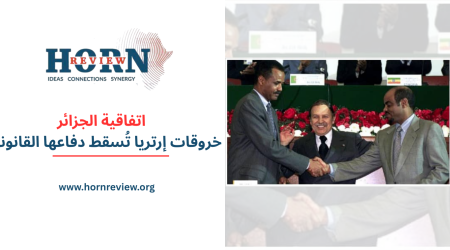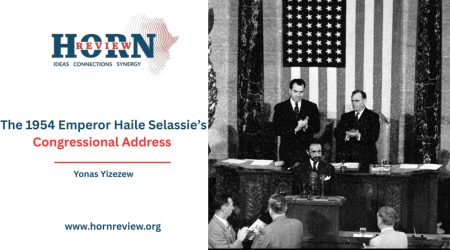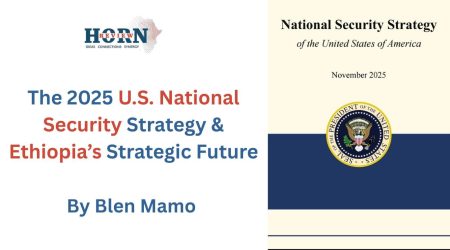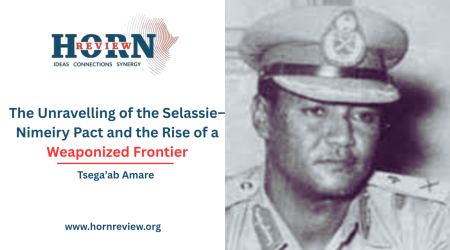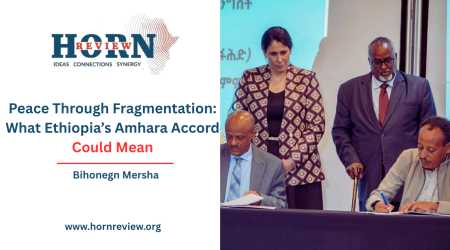
29
May
Empire’s Playbook: The Hidden Hand and the Legacy of Haile Selassie
The declassified CIA documents from August 1963 unveil a remarkable chapter in the history of the Horn of Africa, one that reveals the extraordinary strategic mind of Emperor Haile Selassie at a time of rising regional instability and global Cold War tension. Far from being a passive actor on the world stage, Ethiopia under Selassie demonstrated a masterful command of realpolitik, navigating existential threats with a calculated blend of diplomacy, intelligence, and geopolitical foresight.
Long celebrated as a symbol of African independence and resilience, Ethiopia was also an active architect of its security and influence. The newly released files offer critical insights into how Ethiopia preserved its sovereignty, leveraging both local dynamics and the broader ideological contest between East and West. They reshape not only our understanding of Ethiopia’s role but also reveal how the Emperor’s vision continues to shape the fragile politics of Somalia and Somaliland today.
In 1960, Somalia emerged as an independent republic following the union of British Somaliland and Italian Somalia. Almost immediately, it staked an irredentist claim on Ethiopia’s Ogaden region, home to a significant Somali population. This vision of a “Greater Somalia” presented an acute threat to Ethiopia’s territorial integrity and to the cohesion of its multiethnic empire. Faced with this challenge, Selassie responded not with open confrontation, but with sophisticated strategy—neutralizing the threat without drawing Ethiopia into an unwinnable direct conflict.
The declassified cables reveal that Selassie, recognizing the danger of Somalia’s ambitions, skillfully accused the United States of inadvertently empowering Somali insurgents through military aid, thereby positioning Ethiopia as the injured party in the eyes of the West. Yet, beyond diplomatic protest, Selassie quietly orchestrated a more potent countermeasure. He astutely identified the growing discontent among northern Somalis, particularly in the former British Somaliland—who felt sidelined by Mogadishu’s centralizing policies.
Rather than manufacturing dissent, Ethiopia responded to an already simmering grievance. Ethiopian officials, by August 1963, were discreetly signaling support to these disaffected groups, encouraging a political and tribal challenge to the nascent Somali Republic’s fragile unity. Tribal chiefs from the north soon petitioned Addis Ababa, presenting their struggle as a liberation movement against oppression. It was a classic Cold War maneuver, encouraging internal division not through force but through calculated support, mirroring tactics employed in Vietnam, Angola, and beyond.
This approach carried risk, but Selassie’s calculus was clear. Ethiopia, historically the only African nation to repel European colonization save for Italy’s brief occupation, had long understood survival as an intricate dance of strength, diplomacy, and strategic patience. In the volatile post-colonial order, pan-Somali nationalism posed not only a territorial danger but a challenge to the very idea of Ethiopia as a unified, sovereign state.
Selassie’s strategy was twofold: to weaken Somalia from within while securing unwavering Western support. With Cold War tensions deepening, he adeptly portrayed Somalia as a potential Soviet proxy, while positioning Ethiopia as the reliable, stabilizing ally the West urgently needed in East Africa. This deft narrative ensured that American arms and aid flowed to Addis Ababa rather than Mogadishu. By nurturing Somaliland’s dissent, Selassie not only diverted Somali energy inward but reinforced Ethiopia’s standing as a pillar of order in an increasingly chaotic region.
The ripple effects of Selassie’s vision are still visible. Somaliland today operates as a de facto independent state, its political separation rooted partly in the discontent Ethiopia recognized and subtly supported. Meanwhile, Somalia’s chronic instability, from civil wars to the rise of extremist groups like Al-Shabaab—traces its lineage back to foundational fractures that a wiser and more cautious leadership might have avoided.
Ethiopia’s engagement with Somali affairs did not end with Selassie. Subsequent leaders, including Mengistu Haile Mariam, continued to navigate and influence Somali politics, ensuring Ethiopia remained a critical player. Whether through peacekeeping missions, regional diplomacy, or tactical alliances, Ethiopia’s hand in Somali affairs has often been steady and deliberate, a legacy of Selassie’s strategic template.
These historical realities demand a reassessment of how African agencies operated during the Cold War. Rather than passive victims of global superpower rivalry, actors like Ethiopia actively shaped outcomes to protect their interests. The simplified narrative of Africa as merely a Cold War battlefield gives way to a more complex and, indeed, more empowering vision, one where leaders like Haile Selassie demonstrated that wisdom, patience, and strategic acumen could match and even outmaneuver the great powers of the age.
Haile Selassie’s 1963 plan was far more than a regional power play, it was a profound exercise in statecraft. Surrounded by ideological threats and adversarial neighbors, Ethiopia’s Emperor played the long game, turning adversaries’ weaknesses into opportunities for national preservation. It is no accident that Ethiopia survived where others fractured. Selassie’s vision of leadership was not bound by immediate battles but guided by an enduring commitment to his nation’s sovereignty and stability.
Today, as Ethiopia faces renewed internal challenges and regional pressures, ranging from ethnic tensions to negotiations over the Nile, the echoes of Selassie’s strategies are unmistakable. The Horn of Africa remains a volatile and contested space, and once again, Ethiopia must rely on the same blend of resilience, pragmatism, and strategic foresight that defined Selassie’s era.
The declassified files offer not just a window into the past, but a guidepost for understanding the present and anticipating the future. History, as it turns out, remembers not just the idealism of noble causes but the quiet brilliance of those who secured their nations’ futures through the hard and often hidden work of real leadership.
By Samiya Mohammed, Researcher, Horn Review

